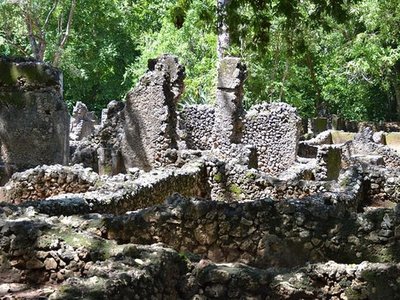Gedi Ruins


The Gedi ruins are one
of Kenya’s great mysteries. Set in an idyllic location on the Indian Ocean, and buried deep in a lush forest, the town was thought to have been founded in the early 13th century, although hard evidence eludes most scientists. But what has baffled researchers is the well-established town’s mysterious abandonment and incredible development.
Left standing today are numerous coral-brick houses, a palace as well as an impressive mosque. However, it is not only the quality of the ruins that amazes visitors but the advanced nature of the settlement. Gedi was in many ways, a very advanced city with streets, running water, and flushing toilets.
Correcting the assumption that Africa was far behind the rest of the world before colonialism, Gedi was a cosmopolitan urban setting, and archeologists have found Ming Chinese vases, Venetian glass as well as other artifacts from all over the world. This potpourri of history is clear evidence that the Muslim inhabitants of the coastal Kenyan town traded heavily with cultures outside their own, and developed an incredible world that has now been deeply decomposed by tropical forests.
Excavation has occurred since 1948, and the entire area is protected as a national park in Kenya.